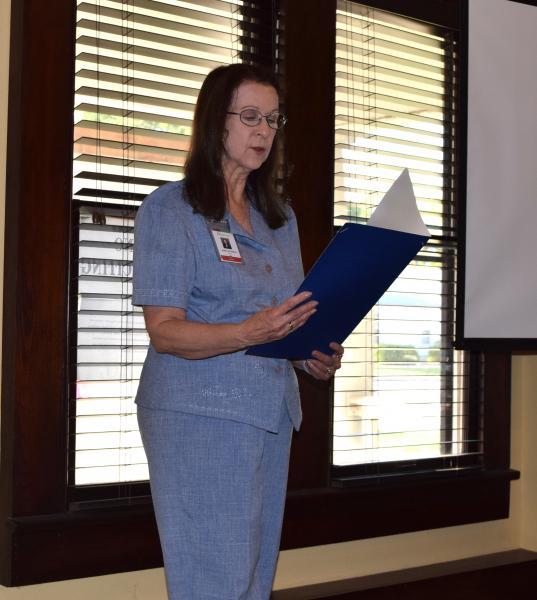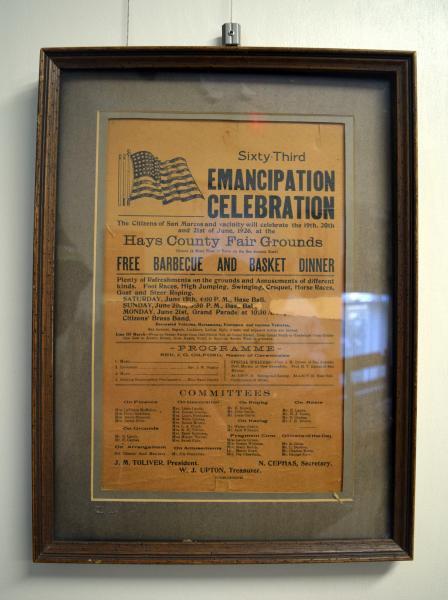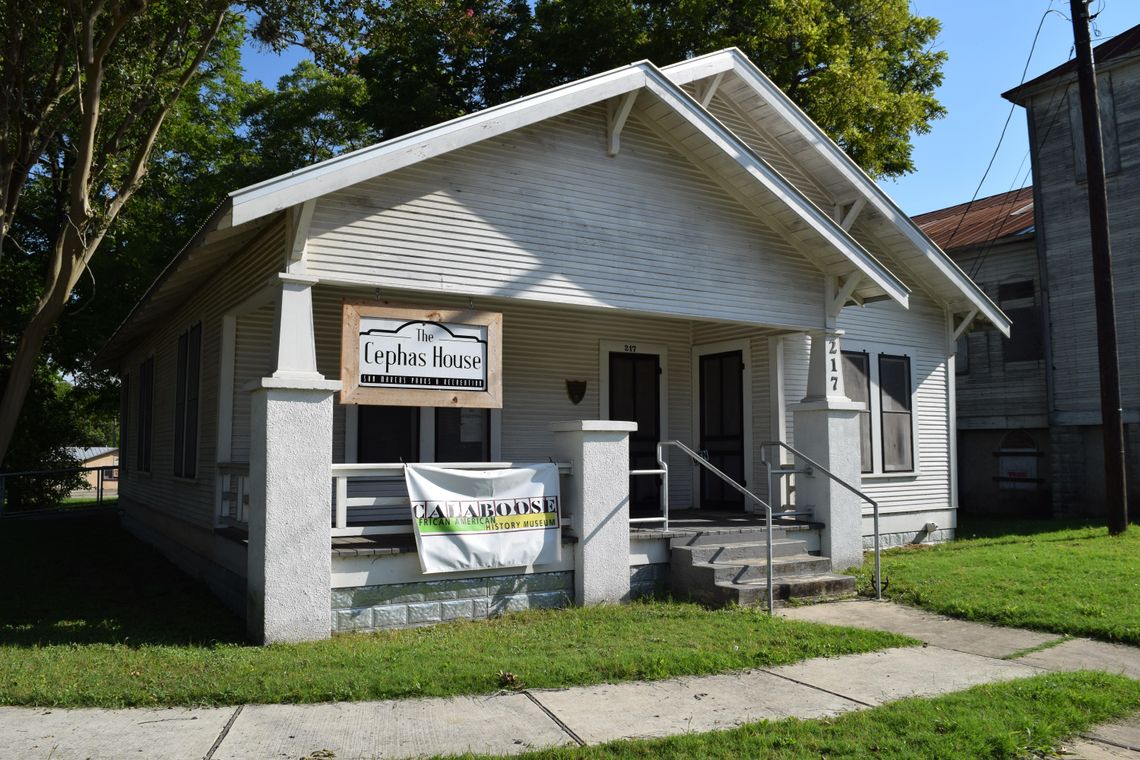The Calaboose African American History Museum commemorated Juneteenth with an evening at the Cephas House on June 19.
Calaboose Board of Directors President Dr. Elvin Holt opened up the evening by highlighting the historical significance of this year’s Juneteenth celebrations.
“Today we are celebrating, not only the 19th of June, but also the 400th year since the first enslaved Africans were brought to America — that was in 1619, they brought 20 Africans to Jamestown, Virginia — so today is a very important day.”
He talked about the founding of the Calaboose Museum and the changes it’s undergone since its inception, including the recent hiring of the museum’s first Executive Director Vanessa Westbrook.
“The museum was organized in 1997 by Mrs. Johnnie Armstead so we are now celebrating our 22nd year, but in all of those years we have never had an executive director, and you must wonder, how did we survive all those years without an executive director?” Dr. Holt said.
Prior to Westbrook’s leadership at the Calaboose, she served as the STEM education manager at the DoSeum in San Antonio; director of international professional development at the National Science Teachers’ Association; director of science at the Charles A. Dana Center, a research unit at the University of Texas at Austin; and as an educator and administrator in Austin Independent School District and Fort Worth Independent School District.
Westbrook, as executive director, is working to enhance the community outreach and financial health of the Calaboose, which has been operated exclusively by volunteers over the last two decades. In the few weeks that Westbrook has been at the Calaboose, she has extended hours from one day a week to four days a week — 11 a.m.-6 p.m. on Thursdays and Fridays, 10 a.m.-6 p.m. on Saturdays and noon to 5 p.m. on Sundays — rearranged displays and is already working on acquiring more pieces to go in the museum.

Sororities that are part of the Panhellenic Council — Alpha Kappa Alpha Sorority, Inc.; Delta Sigma Theta Sorority, Inc.; and Sigma Gamma Rho Sorority, Inc. — are pictured with the Calaboose’s new Executive Director Vanessa Westbrook, who is a part of Delta Sigma Theta Sorority, Inc.
The evening also featured a proclamation read by Mayor Jane Hughson as well as a history lesson about Britt Johnson, the slave that went on to become a legend on the West Texas frontier, by author and historian Joleene Snider.
Britt Johnson was born a slave in Tennessee in the 1840s. He was a slave of Moses Johnson, and although he was legally a slave, he served Moses Johnson as a sort of foreman of the Johnson’s ranch.
Snider explained that many of the documents that she has used to trace the whereabouts and particulars of Johnson are documents that don’t carry a name, but generally only an age, gender and skin color — making separating the man from the myths difficult. She used census data, slave schedules, manuscripts and a lot of careful research to try to filter the fact from the fiction.
“Even I have original source extant documents that contradict each other, which makes finding the real Britt Johnson even more complicated,” Snider said
But she told the audience at the Cephas House what parts of his story she had been able to verify.

Mayor Jane Hughson read a proclamation commemorating June as Juneteenth month in San Marcos.
In October 1864, in Young County, Texas, several hundred Kiowa and Comanche Indians raided the Elm Creek valley northwest of Fort Belknap. Britt Johnson’s wife and two of his children were kidnapped by the raiders. A white man, David White, also had his son, Lonnie White, taken by raiders several months prior. The men joined forces to find their families held in the Comancheria, the region of New Mexico, Texas and Oklahoma occupied by the Comanche before the 1860s.
“These two men, one a black slave and one a white southerner, made this partnership,” Snider said. “Now this was unusual at that time. This implies a certain equality between these two men that they would work together and ride together to find their families.”
Johnson and White traveled from their home counties in Texas to the Comancheria until they were able to find where their families were located. They were both eventually able to negotiate terms to get their families back and were back in Texas by the summer of 1865, the year of the first Juneteenth celebration in Texas.

The Calaboose African American History Museum has a Juneteenth event poster from 1926 on display.
Johnson, after the Civil War, went on to build a business as a freighter between Weatherford and Forts Richardson, Belknap and Griffin. And in January of 1871, traveling with a wagon train through Young County, Johnson and his two partners, Paint Crawford and Dennis Cureton, both former slaves, were attacked by Kiowas.
“The three men first fought from behind their wagons and oxen and then they killed their horses and fought to the death from behind them,” Snider said.
Johnson was buried with his men in a grave beside the wagon road, where they made their last stand. After Johnson’s death, the myths and the stories started to grow and that’s where getting at the real Britt Johnson became difficult, according to Snider.
Johnson’s story was turned into a novel by Alan LeMay in 1954 called “The Searchers.” John Ford then turned the novel into a film, starring John Wayne also called “The Searchers.” Paulette Jiles’ “The Color of Lightning” and “News of the World” as well as Matt Braun’s “Black Fox” all borrowed from his story, along with many others. Along the way, parts of the real story fell away to fictionalized and hyperbolic accounts, which is why Snider left the attendees with a final lesson.
“So here’s my lesson for Juneteenth: Own your own story,” Snider said. “If you don’t own it, someone else may very well end up owning it.”







